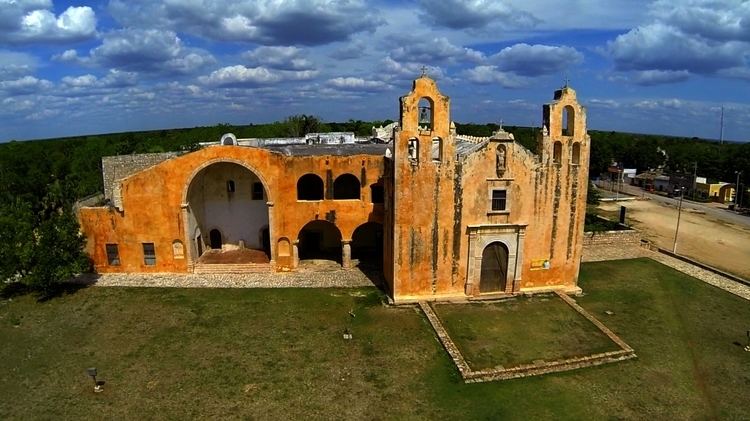Country Mexico Elevation 26 m (85 ft) Website www.mani.gob.mx Postal code 97850 | State Yucatán Demonym(s) Maniense Local time Monday 10:46 AM Area code 997 | |
 | ||
Time zone Central Standard Time (UTC-6) Weather 27°C, Wind NE at 13 km/h, 49% Humidity | ||
Maní is a small city and surrounding municipality of the same name in the central region of the Yucatán Peninsula, in the Mexican state of Yucatán. It is about 100 km to the south south-east of Mérida, Yucatán, some 16 km east of Ticul. The village of Tipikal lies 6 km to the east.
Contents
- Map of ManC3AD YucatC3A1n Mexico
- History
- Early History
- Maya book burning
- Guerra de Castas
- Church and Convent of San Miguel
- Surroundings
- Festivals
- References
Map of Man%C3%AD, Yucat%C3%A1n, Mexico
The population is currently around 4000, similar now to the estimated 4500 in the 16th century.
History
Maní's four millennium existence historically involves mostly its early Maya period, followed in recent centuries by its Spanish conquistador and religious period. Its Mexican period beginning over a century ago involved conflict.
Early History
Maní has been continuously occupied for approximately 4000 years. In the postclassic Mesoamerican era it was home to the Tutul-Xiu Maya dynasty, which moved their capital here from Uxmal in the 13th century. The Xiu were the dominant power in the western Yucatán after the fall of Mayapan in 1441. Maní served as the main religious center in honor of the deity Kukulcan (Cukulcan, Topiltzin Quetzalcoatl) for the Maya with an annual chic kaban festival until 1341.
With the arrival of the Spanish the Xiu of Maní allied themselves with the Spanish and assisted in the conquest of the rest of the peninsula.
Maya book burning
On July 12, 1562, Friar Diego de Landa, who held the office of inquisitor before the Monastery of San Miguel Arcángel, held an auto de fe Inquisitional cerermony in Maní, burning a number of Maya hieroglyphic books and a reported 5000 idols, saying that they were "works of the devil". The number of books burned is disputed. Landa claimed only burning 27. This act and numerous incidents of torture at the monastery were used to speed the mass adoption of Roman Catholicism throughout the region.
Landa's burning of these sacred books with Mayan writing and the subsequent reaction were described by him as follows:
We found a large number of books in these characters and, as they contained nothing in which were not to be seen as superstition and lies of the devil, we burned them all, which they (the Maya) regretted to an amazing degree, and which caused them much affliction.
Guerra de Castas
Maní was involved in part of the multi-decade conflict in the Guerra de Castas, the Caste War of the Yucatán. An engraved stone narrates an episode of the event for Maní in 1850.
Church and Convent of San Miguel
The town has an old Franciscan monastery established in 1549, the Parroquia y Exconvento de San Miguel Arcangel. The large building was built using cut stones from many of the Pre-Columbian structures of Maní. A large open chapel is on the north side with the two bell gables on the church facade. Inside, the apse vault has some early colonial era fresco murals. The nave interior houses three Baroque carved altars with statues of saints and images. Restoration work on the monastery building and its artwork began in 2001.
Surroundings
The area around Maní is largely devoted to agriculture, principally henequen, maize, cattle, and fruit. Hammocks are made in the city.
Festivals
Each 15 August to 24 August Maní holds a festival in honor of the Virgin of the Assumption. Each 3 January is a festival of the Virgin of Candlemas.
